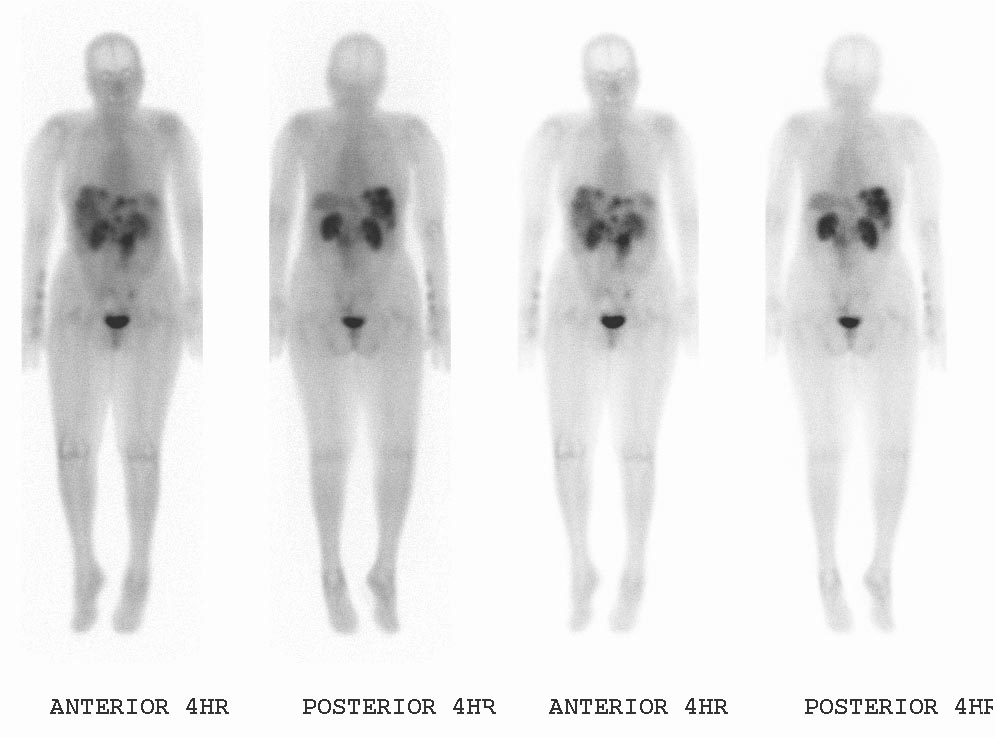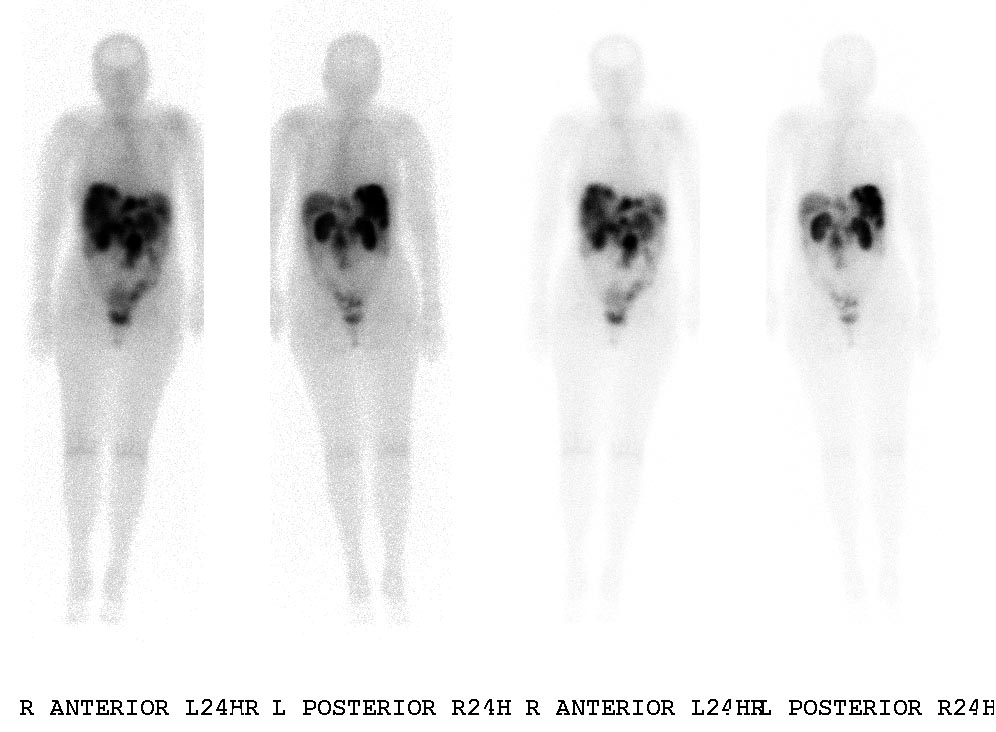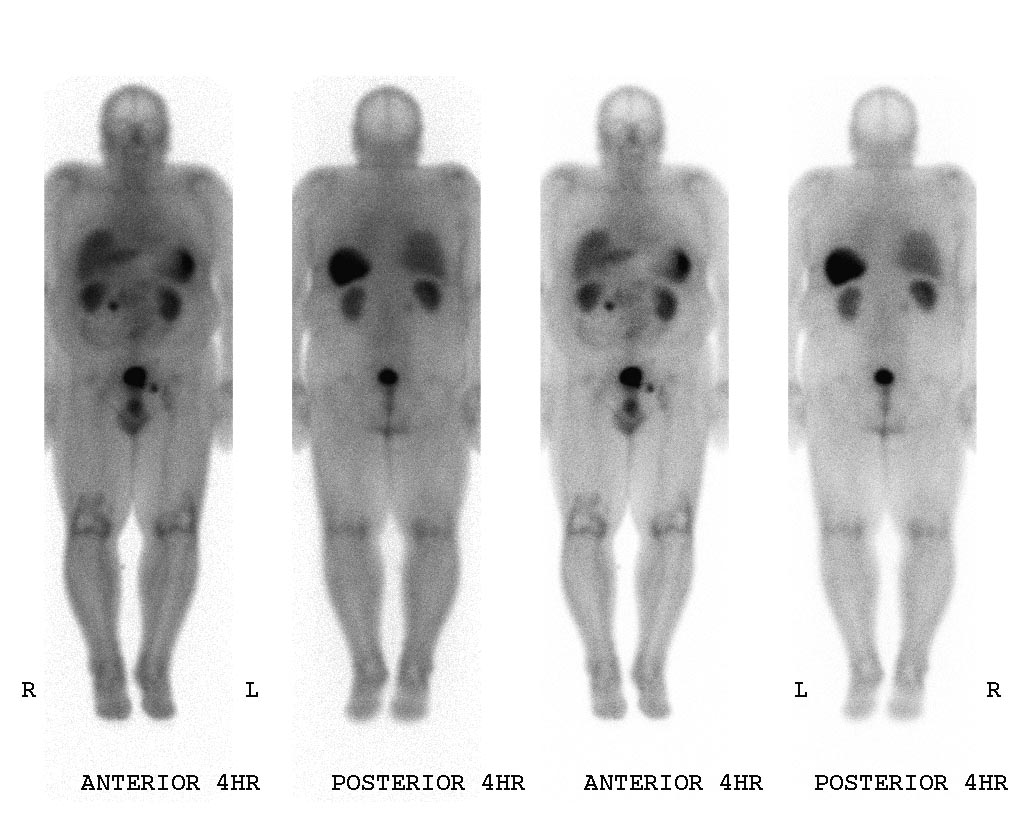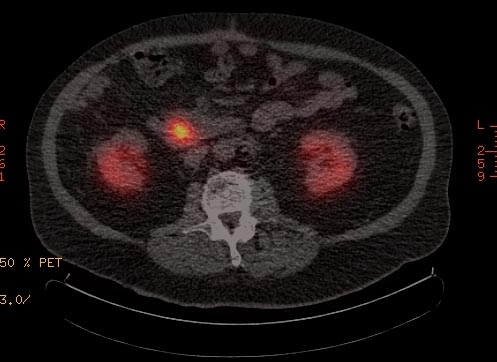Neuroendocrine tumors other imaging findings: Difference between revisions
Jump to navigation
Jump to search
(Created page with "__NOTOC__ {{Neuroendocrine tumors}} {{CMG}} == Overview == ==Other Imaging Findings== The diagnostic procedure that utilizes a somatostatin analog is the OctreoScan, also ca...") |
(Mahshid) |
||
| (6 intermediate revisions by 4 users not shown) | |||
| Line 2: | Line 2: | ||
{{Neuroendocrine tumors}} | {{Neuroendocrine tumors}} | ||
{{CMG}} | {{CMG}} | ||
== Overview == | == Overview == | ||
==Other Imaging Findings== | ==Other Imaging Findings== | ||
===Octreoscan=== | |||
The diagnostic procedure that utilizes a somatostatin analog is the OctreoScan, also called somatostatin receptor scintigraphy (SRS or SSRS): a patient is injected with octreotide chemically bound to a radioactive substance, often [[indium]]-111; for those patients whose tumor cells are avid for octreotide, a radiation-sensitive scan can then indicate the locations of the larger lesions. | The diagnostic procedure that utilizes a somatostatin analog is the OctreoScan, also called somatostatin receptor scintigraphy (SRS or SSRS): a patient is injected with octreotide chemically bound to a radioactive substance, often [[indium]]-111; for those patients whose tumor cells are avid for octreotide, a radiation-sensitive scan can then indicate the locations of the larger lesions. | ||
An OctreoScan is a relatively crude test that generates subjective results. | |||
[http://www.radswiki.net Images courtesy of RadsWiki] | |||
[[Image:Neuroendocrine tumor 001.jpg|left|thumb|400px|OctreoScan demonstrates abnormal uptake in the liver and abdominal lymph nodes]] | |||
<br clear="left"/> | |||
[[Image:Neuroendocrine tumor 002.jpg|left|thumb|400px|OctreoScan demonstrates abnormal uptake in the liver and abdominal lymph nodes]] | |||
<br clear="left"/> | |||
[[Image:Neuroendocrine tumor pancreas 001.jpg|left|thumb|400px|OctreoScan demonstrates abnormal uptake in the head of the pancreas]] | |||
<br clear="left"/> | |||
[[Image:Neuroendocrine tumor pancreas 002.jpg|left|thumb|400px|OctreoScan demonstrates abnormal uptake in the head of the pancreas]] | |||
<br clear="left"/> | |||
[[Image:Neuroendocrine tumor pancreas 003.jpg|left|thumb|400px|OctreoScan demonstrates abnormal uptake in the head of the pancreas]] | |||
<br clear="left"/> | |||
==References== | ==References== | ||
{{Reflist|2}} | {{Reflist|2}} | ||
[[Category:Needs content]] | |||
[[Category:Disease]] | |||
[[Category:Endocrinology]] | |||
{{WH}} | {{WH}} | ||
{{WS}} | {{WS}} | ||
[[Category:Up-To-Date]] | |||
[[Category:Oncology]] | |||
[[Category:Medicine]] | |||
[[Category:Endocrinology]] | |||
[[Category:Surgery]] | |||
Latest revision as of 03:00, 27 November 2017
|
Neuroendocrine tumors Microchapters |
Editor-In-Chief: C. Michael Gibson, M.S., M.D. [1]
Overview
Other Imaging Findings
Octreoscan
The diagnostic procedure that utilizes a somatostatin analog is the OctreoScan, also called somatostatin receptor scintigraphy (SRS or SSRS): a patient is injected with octreotide chemically bound to a radioactive substance, often indium-111; for those patients whose tumor cells are avid for octreotide, a radiation-sensitive scan can then indicate the locations of the larger lesions.
An OctreoScan is a relatively crude test that generates subjective results.




